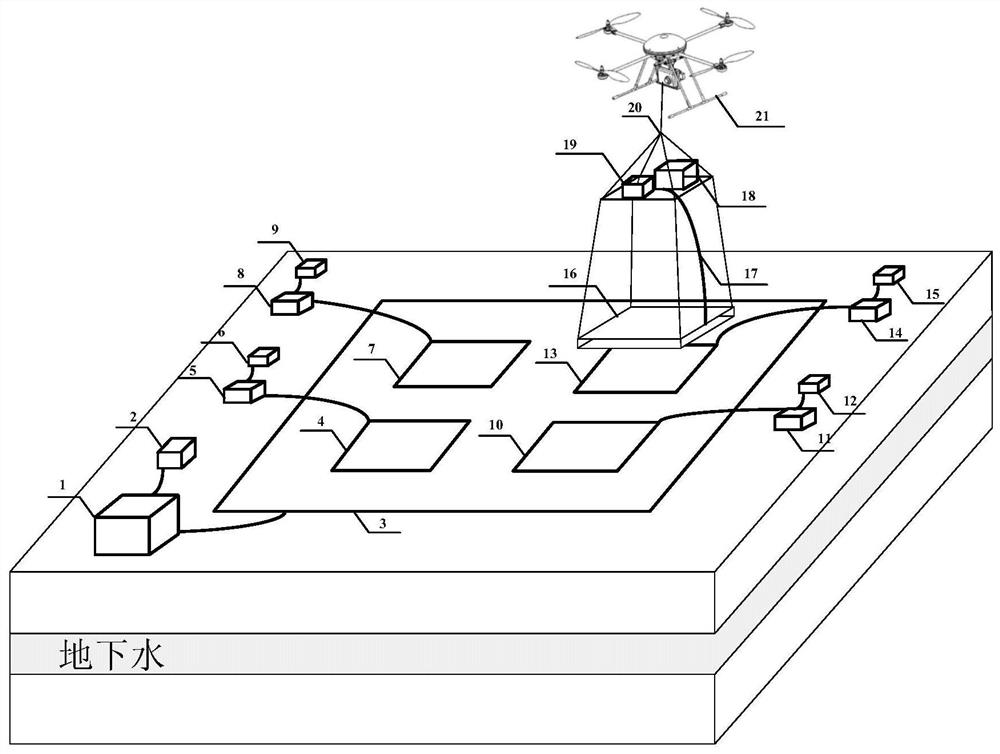Distributed magnetic resonance underground water detection device and method
A detection device and groundwater technology, applied in the field of geophysical exploration, can solve problems such as poor flexibility, complicated process, and complicated wiring
- Summary
- Abstract
- Description
- Claims
- Application Information
AI Technical Summary
Problems solved by technology
Method used
Image
Examples
Embodiment Construction
[0065] In order to make the objectives, technical solutions, and advantages of the present invention clearer and more comprehensible, the present invention will be further described in detail below in conjunction with embodiments. It should be understood that the specific embodiments described here are only used to explain the present invention, but not to limit the present invention.
[0066] See figure 1 Combine figure 2 As shown, a distributed magnetic resonance groundwater detection device includes an excitation device, multiple polarization devices, an aerial receiving device, and an associated wireless module; in the excitation device, the second wireless module 2 controls the excitation transmitter 1 in the excitation coil 3, the excitation current is output; the multiple polarization devices include four sets of polarization devices, which are distributed in the detection area. When the exploration area is increased, the number of polarization devices can continue to incr...
PUM
 Login to View More
Login to View More Abstract
Description
Claims
Application Information
 Login to View More
Login to View More - R&D
- Intellectual Property
- Life Sciences
- Materials
- Tech Scout
- Unparalleled Data Quality
- Higher Quality Content
- 60% Fewer Hallucinations
Browse by: Latest US Patents, China's latest patents, Technical Efficacy Thesaurus, Application Domain, Technology Topic, Popular Technical Reports.
© 2025 PatSnap. All rights reserved.Legal|Privacy policy|Modern Slavery Act Transparency Statement|Sitemap|About US| Contact US: help@patsnap.com



